This page has pictures of the demos presented at this year's World of Commodore show.
exhibit hall pictures | back to main Commodore page
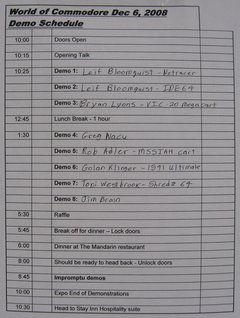
The demo schedule for WoC 2008. |

The Shredz64 splash screen. Shredz is a C64 port of Guitar Hero; see the exhibit hall page for a couple of other Shredz pictures. |
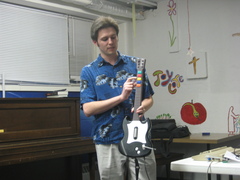
Toni explains how the guitar controller is interfaced (functions that do not map directly to the joystick port are assigned POT ranges). |
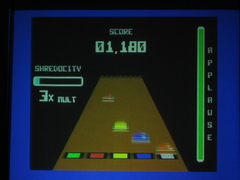
The Shredz64 game screen (sorry about the blurry sprites). |
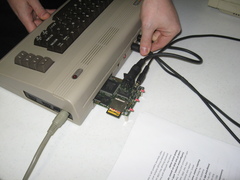
Golan prepares to demo the 1541 Ultimate, which is the Cadillac of the new class of storage devices that have become available. Not only does it support fastloaders (including GEOS), but its FPGA reproduces the 1541 so faithfully that you can hear the heads stepping through its audio output! |
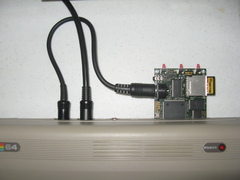
Closeup of the 1541 Ultimate (without the audio cable). |
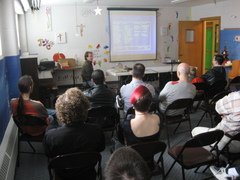
Leif demos the latest version (4.1) of IDE64. This device, although it supports memory cards and has a clock port for Ethernet, does not directly support D64 images. But it is able to copy files directly to and from a PC hard drive. |
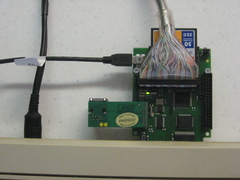
Closeup of Leif's IDE64. It can transfer large piles of data to the '64 at DMA speeds, which makes cross-development easy and opens up the possibility of mind-blowing demos. |
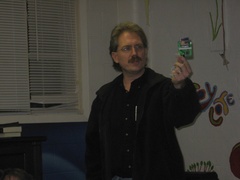
Jim Brain shows the latest version of the μIEC, which now supports SD cards. This device is very small and supports CMD partitions and syntax, although support for fastloaders must be added in the firmware (JiffyDOS is supported). |
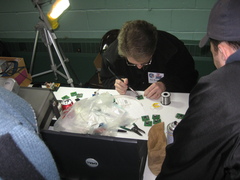
Jim soldering μIEC boards at his table, which resembled an archeological dig. What will future historians think? |
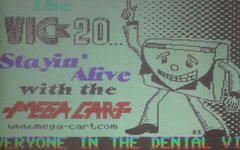
Splash screen of the VIC-20 MegaCart, which allows switching in cartridge images of a huge amount of games and other software. |
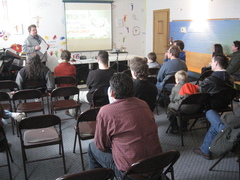
Brian Lyons demoing the MegaCart. |
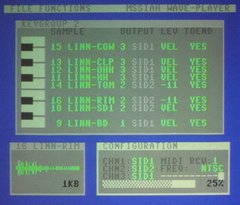
The new wave player in MSSIAH, which Rob Adlers showed us. MSSIAH is the follow-on product to Prophet64, and only just became available. The wave player allows samples to be played from a connected MIDI keyboard. |
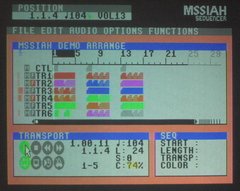
The MSSIAH sequencer, which is similar to that in Prophet64. |
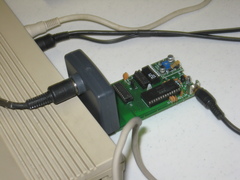
Closeup of MSSIAH, connected to one of Mangelore's stereo SID boards. |
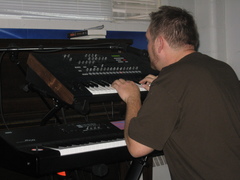
After the demo, Rob played "Neon Lights" for us, controlling MSSIAH from a MIDI keboard to demonstrate its practical application. |
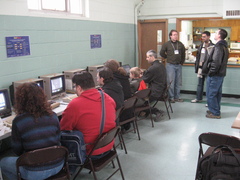
Leif Bloomquist could have issued standby passes for the people who wanted to play NetRacer, which networks eight C64s with Ethernet cards. |
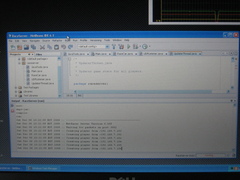
Leif showed his excellent taste in development tools by running the Java-based server component of NetRacer from within NetBeans. |

Greg Nacu prepares for his demo of the WiNGs operating system. |

WiNGs requires a SuperCPU with a SuperRAM card to run, but boasts true preemptive multitasking. Greg demonstrated this by showing video playback while simultaneously resizing a JPEG image. |
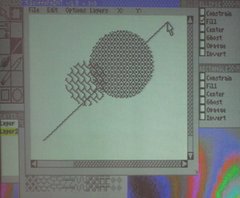
This is the WiNGs app Greg is working on, called SpiffyPAINT. Note the ability to define layers (the line passes "underneath" one of the pattern circles). Look out, GIMP! |

The "FrankenBox" Greg ran his demo on, which began life as an SX-64. The SuperCPU with its SuperRAM card is visible at center (look for the three toggle switches). |